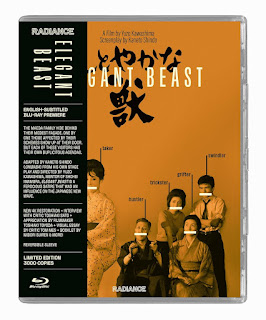The Blue Jean Monster

Fans of Asian cinema know – and appreciate – that things can get very weird, very quick. For instance, a standard cop movie can turn into a slapstick zombie sitcom at a moment’s notice. Which is exactly what happens in The Blue Jean Monster (1991), a left-of-center action comedy that pretty much defines Hong Kong’s all-bets-are-off filmmaking aesthetic. Joe is a gung-ho police officer whose wife is expecting their first child when he’s killed trying to apprehend a gang of bank robbers. But an electrical jolt revives him, granting superstrength and an immunity to pain as long as he’s re-charged every so often. Hoping to last just long enough to get revenge and bring his baby into the world, Joe enlists the aid of a pair of live-in teens to help disguise his condition and track down the bad guys. Unapologetically goofy and prone to hit below the belt, The Blue Jean Monster is pretty un...








